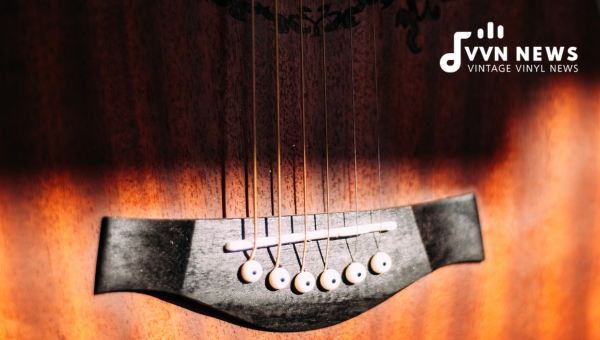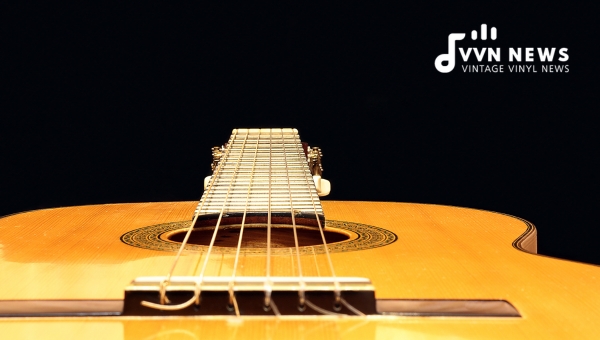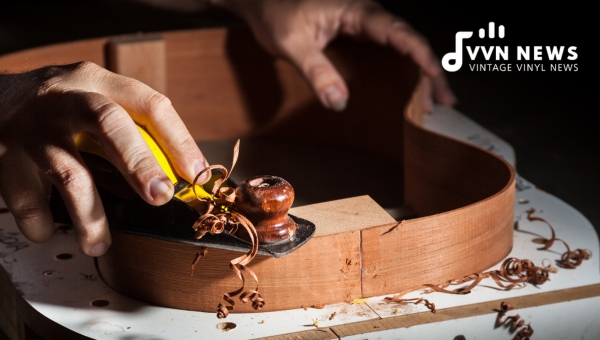Any guitarist will tell you that the little details matter, and those intricate and obscure details comprise a big part of one’s connection to their instrument.
Knowing your instrument well significantly boosts your playing experience, which applies to all its components – from strings to the fretboard.
In understanding our beloved guitars more deeply, many overlook guitar inlays. So, that’s what we’ll delve into today: those seemingly small but crucial fretboard markers guitar inlays – all about them.
Guitar inlays are not just embellishments for aesthetics (+add transition). They perform vital functions for the musician and contribute significantly to the overall quality of music produced.
As we guide ourselves across the fretboard, these markers work as our map, helping us find our way around.
So grab a coffee or whatever tune-up beverage you prefer, settle down, and join me in this exciting exploration of guitar inlays – all about those fretboard markers that work behind the scenes on every strummed chord or plucked note.
History of Guitar Inlays
The history of guitar inlays is as rich and diverse as the music created on these instruments, reflecting cultural influences, changing materials, and evolving designs.
The Early Days
In the early years of luthiery (the craft of making stringed musical instruments), guitar inlays were primarily a form of artistry.
Luthiers would embed intricate designs into the wood to add beauty and individuality to their creations.
These designs were often reflections of the culture, traditions, or personal preferences.
Mother-of-pearl was a common material used for inlays during this period, prized for its iridescent shine.
This material could be obtained from various types of shellfish – giving each piece its unique look.
Influence from The East
Fast forward a few centuries to the age of trade and exploration, and Eastern influences became prominent in guitar design.
The intricate Ottoman and Persian motifs, often depicting scenes from nature such as vines, flowers, or trees – transported via traders and explorers – began reflecting on guitar inlays.
These designs frequently made lengthy use of abalone, a beautifully colorful shell that is also a marine resource.
Transition to Modern Inlay Designs
By the 19th century, with musical styles evolving rapidly, so did the need for more practical performance-based markers that aid musicians in navigation across fretboards.
Dots were introduced first, followed by diamond shapes and block patterns. While these were functional changes, they also amounted to aesthetic innovations.
Despite modern advancements in materials and design principles, today’s custom pieces often echo those vintage vibes reminiscent of cultural diversity from different corners of our planet that once influenced this craft.
Also Read: 20 Best Classical Guitars [Top Picks For A Beautiful Sound]
What are Guitar Inlays?

Guitar inlays are decorative elements set into the exterior surface of a guitar, typically along the fretboard.
They play two primary roles: aesthetics and functionality. In terms of aesthetics, they add a unique touch to the guitar’s appearance.
In terms of functionality, they serve as visual markers to indicate fret positions. Without these markers, identifying the exact position on the fretboard may become challenging, especially for beginners.
Therefore, inlays are vital in improving playability by helping musicians navigate scales and chords more efficiently on the fretboard.
Diversity of Guitar Inlays Design
The diversity of guitar inlay designs ranges from simple dots to complex motifs.
Over the years, luthiers have created designs for various preferences, including more traditional and modern styles.
Dots
Dots are perhaps the most common form of guitar inlays. These usually appear at the 3rd, 5th, 7th, 9th, 12th (often a double dot), 15th, and 17th frets.
Typically made from synthetic materials like plastic or, at times, more premium ones like mother-of-pearl, these inlays are much favored for their simplicity and functionality.
They offer musicians a quick visual reference as they navigate up and down the fretboard.
Trapezoids & Blocks
Another popular design is the trapezoid and block inlays often found on Gibson’s Les Paul models, amongst other guitars.
These sleek geometric forms stand out more prominently than dots due to their larger size, providing an unmistakable landmark on the guitar’s fretboard.
Commonly seen with Les Paul Standards built around the mid-’50s through ’60s, this vintage look evolved into rectangular blocks on Custom models by the late ’50s, finding customers who preferred something more flashy.
Tree of Life
For those hankering after something more elaborate and unique, one cannot overlook the intricate Tree of Life inlay designs usually found adorning classical guitars or high-end acoustics.
This spectacular design depicts an abundant tree extending its branches across the fretboard.
It suggests depth and wisdom well resonating with musicians wanting their instrument to present a more profound aesthetic statement.
Modern Guitar Inlays
Modern times have seen creativity kick into overdrive with innovative designs taking center stage, giving us wonders like:
- Sharkfin Inlays: Particularly associated with Jackson guitars, this aggressive style well complements their reputation for producing metal-driven guitars
- Neoclassical: Notable for its symmetrical vignettes, this design continues to gain popularity among rock musicians.
- Handcrafted Custom Inlays: On high-end guitar builds, custom-designed handcrafted inlays offer that extra amp-up on personalization.
- Inlay Stickers: For those looking for easy application decals (temporary) or added bling without breaking the bank, there’s always an array of stickers!
As you can see, there’s plenty to choose from when deciding upon your guitar’s fret markers, which could reflect your musical journey or add that touch of class suitable for royal jamming sessions.
Also Read: 20 Best Guitar Amps For 2025 [Experience Epic & Powerful Sound]
Materials Used for Guitar Inlays

Diverse materials, both natural and synthetic, are used in creating guitar inlays. Let’s discuss the most popular ones.
Natural Materials
- Shell: This is perhaps one of the oldest materials used for inlays. Covers from different species of mollusks provide a beautiful spectrum of colors.
- Mother-of-Pearl: This shell type, specifically from oyster or abalone, is recognized by its stunning iridescent sheen.
- Abalone: Abalone shells are the go-to choice for your guitar inlay to stand out with striking blue-green hues.
- Ivory: Historically, ivory was favored for its brightness and detail retention, but due to animal protection laws and ethical considerations, usage has declined dramatically.
Synthetic Materials
- Plastic: This is a cost-effective alternative that can mimic the appearance of traditional materials like mother-of-pearl or abalone.
- Metals: Some modern designs utilize nickel or silver for a bold and contemporary aesthetic.
From elegant shells to dynamic metallics, the choice of material for guitar inlays can dramatically affect both visual appeal and the playing experience.
Role of Guitar Inlays in Playing and Performance
Guitar inlays do more than make your instrument look good. They are essential as roadmaps on the fretboard, guiding your fingers to hit the right notes.
Let’s dig deeper into the significant parts that guitar inlays have in playing and performance.
Navigation Aids
First and foremost, inlays help you navigate the fretboard. If you look closely at any guitar neck, you’ll see these little markers usually at the 3rd, 5th, 7th, 9th, 12th, 15th, and so forth – all these are positions of notes or ‘intervals’ on the scale.
For example, the double markers on the twelfth fret represent an octave. So, these markers can guide a player to move faster across intervals without counting every fret.
This is particularly crucial for beginners learning scale patterns or intermediate players who might lose their bearings mid-neck while changing positions rapidly during solos.
Enhancing Stage Presence
Besides functionality, guitar inlays also significantly contribute to aesthetics and can influence a guitarist’s performance.
A unique guitar design often becomes synonymous with its player’s stage persona in concerts or stage shows where visuals play an equal part in music.
Examples abound, like Slash’s iconic Les Paul with its unmistakable trapezoid block inlays or Steve Vai’s JEM series Ibanez guitar complete with its funky “Tree of Life” inlay.
Their player and guitar become inseparable when visualizing one without thinking of the other.
Customized Markings for Personal Reference
Some artists go ahead with personalized inlays as per their music styles. Unlike regular marker positions, they get unique markings (like at the 1st or second frets) that aid them better according to their playing style – like leaving bread crumbs for a more leisurely route back home!
Inlay Materials Affect the Tone
It may not be widely known, but the choice of inlay material can affect your guitar’s overall sound.
While this effect might not be noticeable for beginner or intermediate players, seasoned musicians often report a difference in sound characteristics based on different inlay materials.
For instance, shells and woods used for inlays can modify frequencies produced while plucking.
The guitar inlays, often overlooked by casual listeners or beginner players, hold an intangible value to a musician – aesthetically and functionally.
They form the visual and physical interface between player and instrument – guiding melody navigation, forming part of individual artistry, and possibly subtly influencing tonality.
So next time you pick up your guitar, take a moment to acknowledge these crucial little road signs because they are much more than mere ‘decorations.’
Also Read: 20 Best Eq Pedals For Perfect Tone [Shape Your Guitar Sound]
How to Choose the Right Inlay for Your Guitar?

Choosing the right inlay for your guitar could puzzle many, especially when you understand the variety. Here are some essential factors to consider while you’re at it.
Material
When selecting inlays, materials play a pivotal role. Earlier, luthiers picked from naturally occurring materials such as mother-of-pearl, abalone, or ivory.
However, we have many synthetic materials at our disposal, too. This opens up many possibilities when deciding on looks and durability.
Although traditional materials like mother-of-pearl or abalone shells exhibit an iridescent quality that synthetic options may lack, many modern alternatives provide excellent durability and striking visual appeal.
Some musicians prefer metal inlays due to their long-lasting nature and the unique sheen they impart.
Design Preference
Just as with any other physical attribute of your guitar, the design preference for inlays is incredibly personal.
You might be drawn towards the classic elegance of simple dot inlays or find the edgy appeal of sharkfin designs more alluring.
Several luthiers offer custom inlay designs, giving you a chance to personalize your instrument truly.
These might include intricate patterns, symbolic imagery, or initials for a special touch. Remember, opting for custom designs usually means shelling out extra bucks!
Playing Style
Your playing style significantly impacts your choice of guitar inlays. Large block markers might be beneficial over subtle dot markers if you’re a guitarist who frequently performs live under dim lighting conditions.
More prominent and conspicuous markers best serve visually oriented players who rely significantly on fret markers while playing complex riffs or solos.
Similarly, fingerstyle players may prefer detailed inlay work along the guitar’s side where visibility isn’t compromised by picking pattern movements.
On the contrary, those who rely more on muscle memory might prefer minimalist designs to maintain the guitar’s aesthetic clean line.
Inlay Placement
While discussing inlays, it’s also worth saying something about their placement.
The commonly seen positions are either on the fretboard or alongside it. If you’re a guitarist who tends to look directly downward while playing, those fretboard markers would work better for you.
Alternatively, choosing a guitar with side markers could be more helpful if your gaze tends to err at some angle while you play.
This becomes crucial if you’re part of a live performance band where dynamic stage movements are often involved.
Choosing the right inlay can add an expression of yourself into your guitar while enhancing the overall playability of the instrument.
Also Read: 15 Best Tremolo Pedals [Add Vibrato To Your Guitar Sound]
FAQs About guitar inlays
What is the purpose of guitar inlays?
Guitar inlays primarily serve two purposes: they act as guide markers on the fretboard to ease navigation while playing and add to the aesthetic appeal of the instrument.
What materials are used in guitar inlays?
Both natural and synthetic materials are used for guitar inlays. Raw materials include mother-of-pearl, abalone, and ivory, whereas synthetic materials can range from various types of plastic to metals.
Are there different designs for guitar inlays?
Yes, a wide variety of designs is available for guitar inlays, including dots, trapezoids & blocks, Tree of Life patterns, and modern designs such as Sharkfin Inlays and Neoclassical styles.
Does the design of a guitar inlay affect the sound quality?
No, the design or material of a guitar’s inlay does not influence your instrument’s sound quality or tonality. They are primarily meant for aesthetic appeal and fretboard navigation.
How can I maintain my guitar inlays?
Maintain your guitar’s fretboard with cleaners explicitly designed for instruments. Wipe it dry after every use to prevent dirt build-up, keep it moisturized, avoid cracked wood, and always handle it with clean hands, preserving its shine.
Conclusion
Understanding fretboard markers or guitar inlays is vitally essential in the vast world of guitar craftsmanship.
They are not merely a decorative element but a practical map that guides your fingers through the labyrinth of strings on your fretboard.
Whether standard dots or custom designs, selecting suitable inlays can enhance your overall playing experience by providing easy navigation and boosting aesthetic appeal.
So next time you pick up your guitar, take a moment to appreciate those small but significant markers adding vibrancy to every melody created on those six strings.








